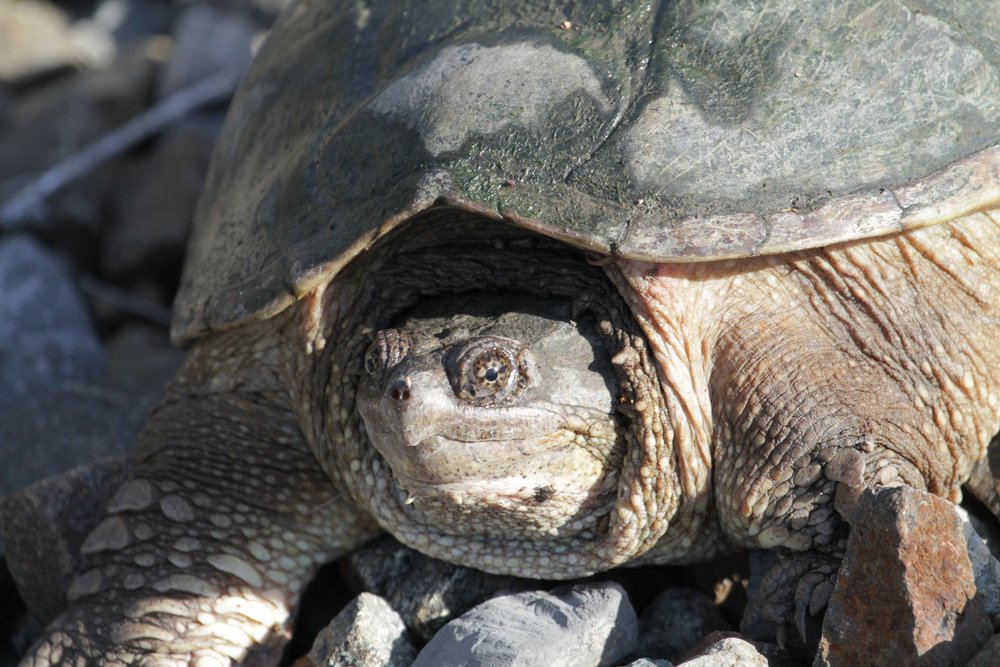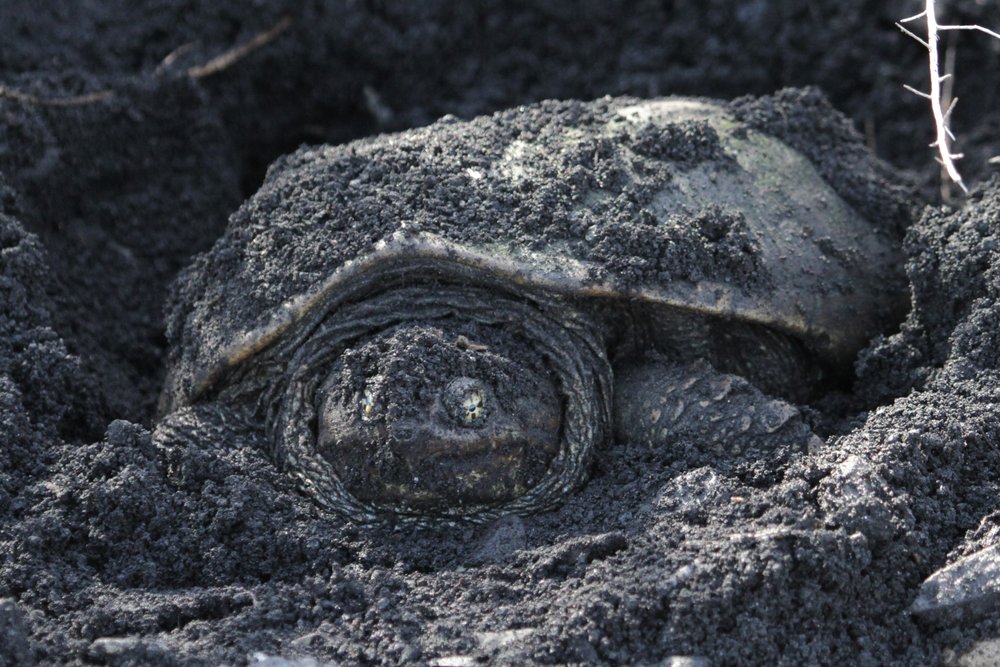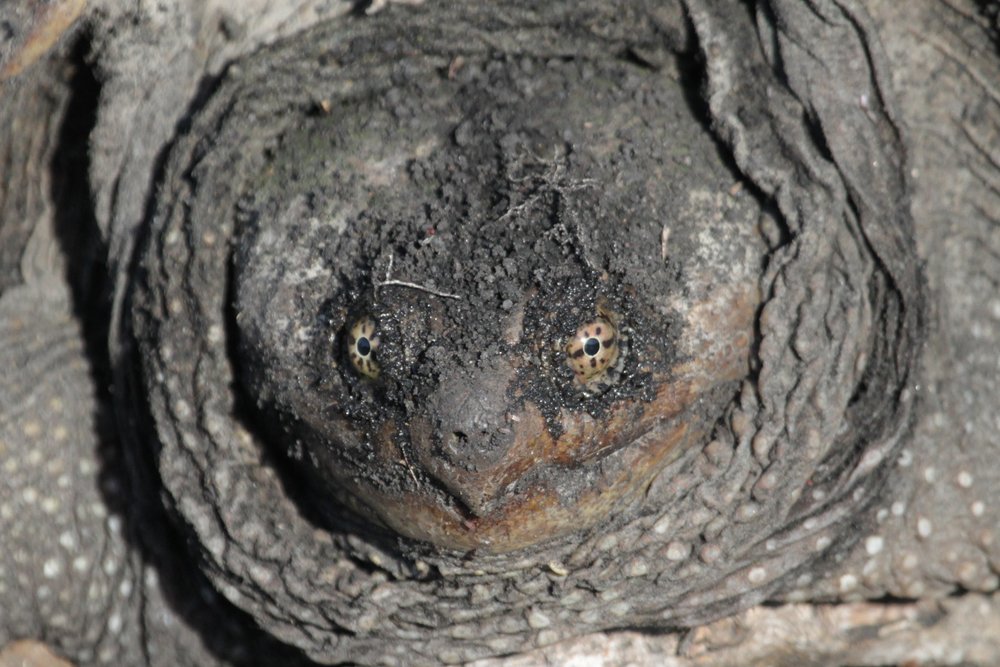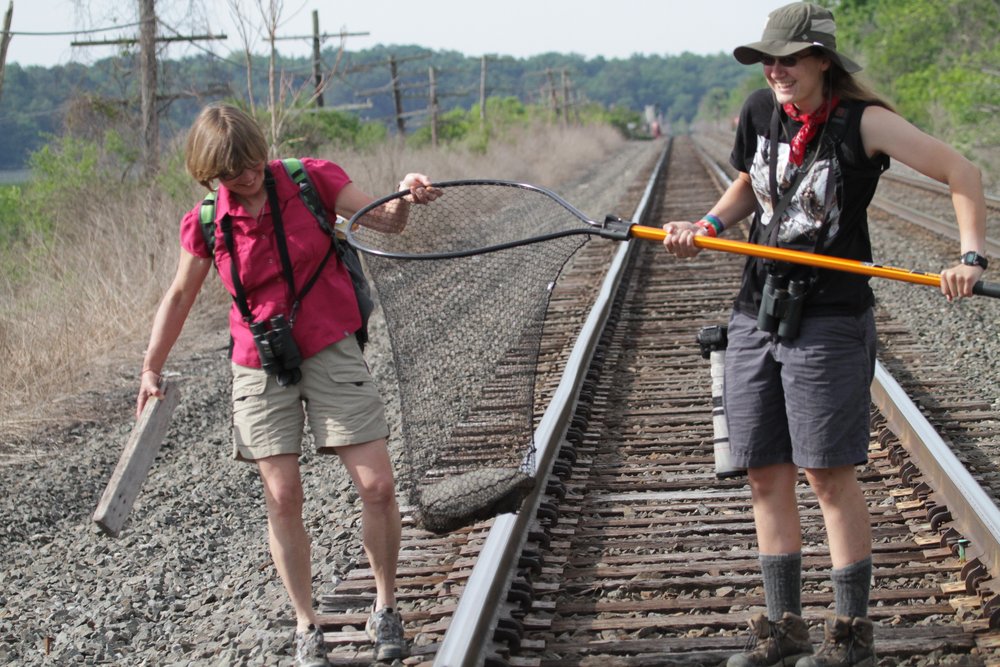
I prepared for snapping turtle week by buying a fishing net. As I left Gander Mountain someone called to me: “butterflies?”—those would be some butterflies!
“Nope, Snapping turtles,” I called back, cheerful.
He rolled his eyes.
 my finest rescue techniqueBecause snappers travel to lay their eggs, they cross roads and railroad tracks—and often are crushed. Already I had clumsily shoved a turtle across a road, the turtle snapping, four or five of us offering suggestions, stopping or slowing cars, and from time to time screaming in surprise when the turtle lunged with a snap. The net was the solution to all of my turtle rescuing problems.
my finest rescue techniqueBecause snappers travel to lay their eggs, they cross roads and railroad tracks—and often are crushed. Already I had clumsily shoved a turtle across a road, the turtle snapping, four or five of us offering suggestions, stopping or slowing cars, and from time to time screaming in surprise when the turtle lunged with a snap. The net was the solution to all of my turtle rescuing problems.
Last year, I stumbled on the maternity ward of snappers along the train tracks that slice the North Tivoli Bay from the main artery of the Hudson River. There, in the black gravel laid as foundation for the tracks the snapping turtles can easily dig, then the sun warms the eggs beautifully. On June 6 of last year, I saw dozens of turtles digging, and rescued one caught between the rails. The next day, dozens of turtles lay crushed, mangled by the trains barreling north and south. This year, I was going to save as many turtles as possible.


Further up the track it was a regular egg laying fest. Over twenty nests had been dug and raided—no doubt by raccoons. Shreds of the eggs littered the disturbed holes, the white so white against the black soil. But over a dozen lady snappers were still in holes, quietly laying their round, white eggs. Three had gathered near to each other, hind ends burrowed deep in the soil. When we returned half an hour later, one was gone—and her nest already empty. How quickly the thief works!
And yet--though the raccoon was hard at work, we saw no turtles crushed by the steel wheels of the train. This, a small relief.
We stopped for tea and sticky buns brought by Kate from the Tivoli Bakery—for any tradition to be a success, good food is essential—and watched barn swallows wing in and out under the underpass.

Does saving two snapping turtles make a difference? Maybe, but maybe not. It is comforting but naïve to think that every little bit helps—because in the face of our environmental problems this doesn’t even register. What matters, though, is that saving these turtles is what I can do, it’s what I do. It’s one of my traditions.